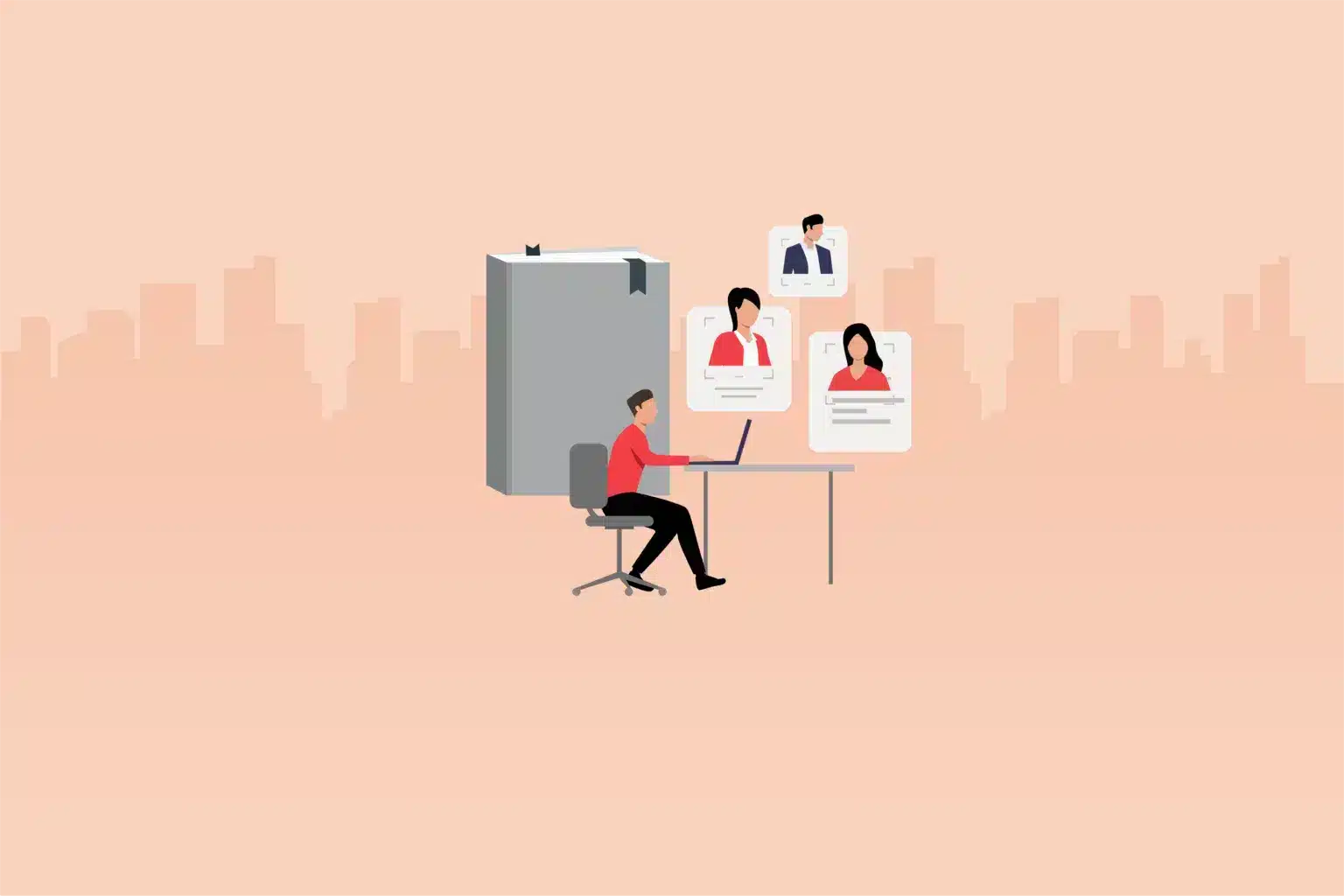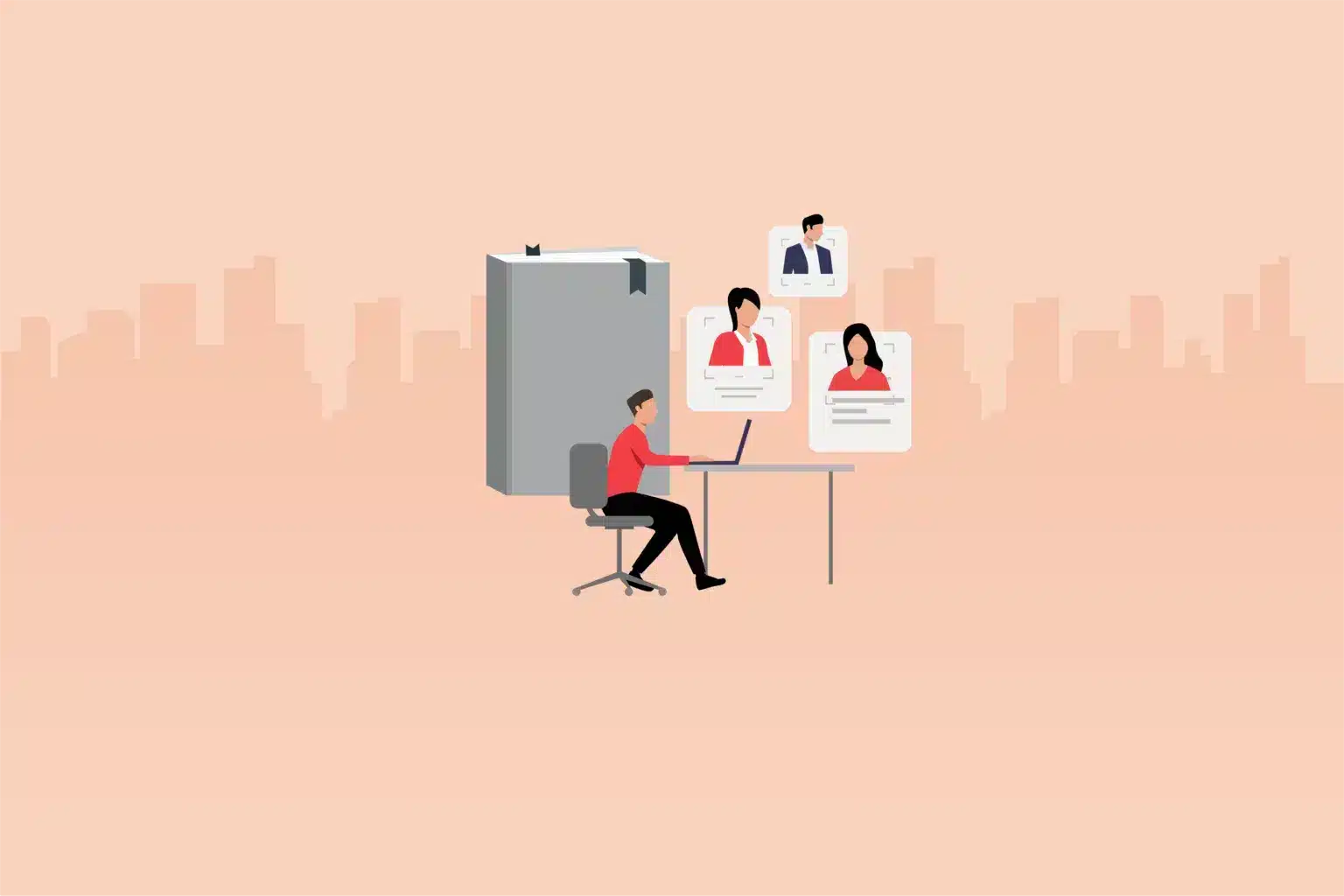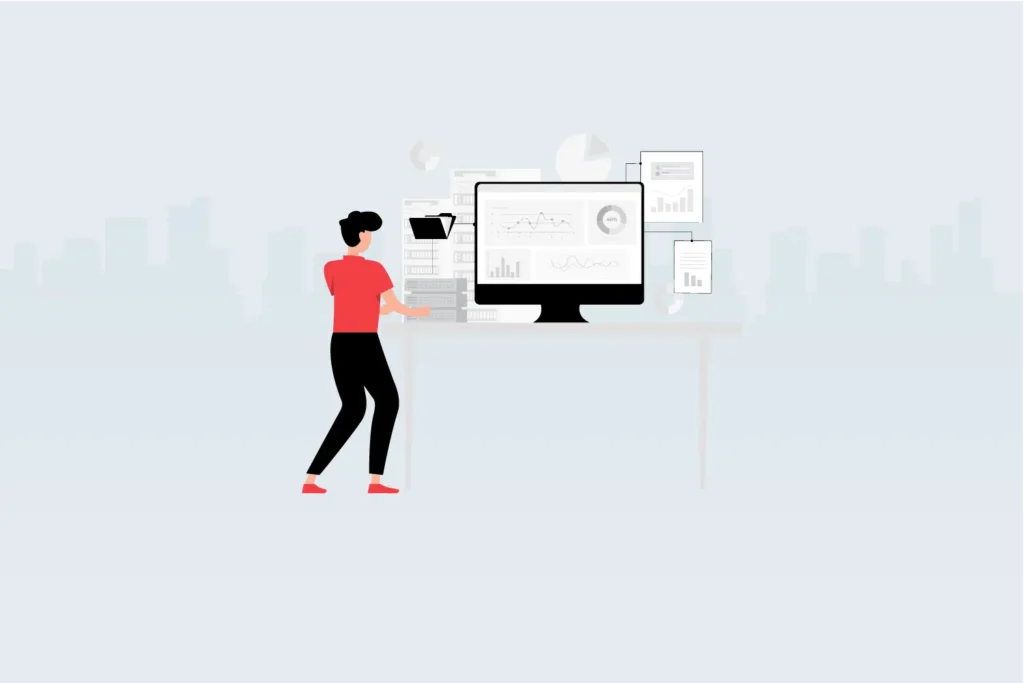In today’s rapidly evolving financial landscape, the role of a Credit Risk Analyst has become increasingly vital for organizations seeking to navigate the complex world of lending and financial stability. With the ever-growing emphasis on data-driven decision-making, the demand for skilled Credit Risk Analysts has surged significantly. HR professionals and CXOs alike are keenly aware of the need to identify candidates who possess a unique blend of analytical acumen, industry expertise, and the ability to leverage advanced analytics tools.
In this competitive hiring environment, organizations are actively seeking professionals who can not only assess and mitigate credit risks but also provide strategic insights to drive sustainable growth. This article will delve into the latest recruiting trends in the Credit Risk Analyst field, shedding light on the key skills and qualifications that companies prioritize in their quest to build robust risk management teams.
Here are the top 60 Credit Risk Analyst interview questions to ask job applicants:
15 general interview questions for the Credit Risk Analyst
- Can you provide an overview of your experience in credit risk analysis and its impact on financial decision-making?
- How do you stay updated on industry trends and regulations that affect credit risk management?
- Describe your approach to analyzing creditworthiness and assessing the risk associated with potential borrowers.
- Can you share an example of a challenging credit risk analysis project you worked on? How did you handle it, and what was the outcome?
- What methodologies and tools do you utilize to assess credit risk? How do you determine the appropriate level of risk for different types of borrowers?
- How do you evaluate the credit risk of a company with limited financial information available?
- Can you explain the concept of credit scoring and how it influences your analysis and decision-making process?
- Describe a situation where you had to make a difficult credit risk recommendation. How did you handle it, and what factors did you consider?
- How do you communicate credit risk findings and recommendations to stakeholders with varying levels of financial expertise?
- How do you monitor and manage credit risk on an ongoing basis? What metrics or indicators do you rely on?
- Can you discuss any instances where you identified emerging credit risks and implemented proactive measures to mitigate them?
- How do you collaborate with other departments, such as sales or finance, to ensure a comprehensive understanding of credit risk within the organization?
- What steps do you take to ensure compliance with regulatory requirements related to credit risk management?
- Describe a time when you had to manage multiple credit risk analysis projects simultaneously. How did you prioritize and ensure timely completion?
- How do you handle situations where there are conflicting priorities between risk management objectives and business growth opportunities?
5 sample answers to general interview questions for the Credit Risk Analyst
- Can you provide an overview of your experience in credit risk analysis and its impact on financial decision-making?
look for: Look for candidates who can effectively articulate their experience in credit risk analysis and demonstrate how it has influenced financial decision-making.
Sample Answer: “Throughout my career, I have gained extensive experience in credit risk analysis within the banking sector. I have worked on various projects where I assessed the creditworthiness of borrowers and provided recommendations to senior management. In one notable case, I conducted a comprehensive credit risk analysis for a corporate client seeking a significant loan. By diligently examining their financial statements, industry trends, and market conditions, I identified potential risks and presented a detailed risk assessment report. This analysis significantly influenced the financial decision-making process, allowing the organization to make an informed lending decision.”
- How do you stay updated on industry trends and regulations that affect credit risk management?
look for: Look for candidates who demonstrate a proactive approach to staying informed about industry trends and regulations, such as through continuous learning, professional networks, or industry publications.
Sample Answer: “To stay updated on industry trends and regulations, I actively engage in continuous learning initiatives. I attend relevant seminars, workshops, and conferences to enhance my knowledge and understanding of evolving credit risk management practices. Additionally, I am an active member of professional networks and participate in online forums where industry experts share insights and discuss emerging trends. Furthermore, I regularly read industry publications and regulatory updates to ensure compliance with the latest guidelines and requirements.”
- Describe your approach to analyzing creditworthiness and assessing the risk associated with potential borrowers.
look for: Look for candidates who can explain a structured and comprehensive approach to analyzing creditworthiness, considering various factors such as financial statements, industry analysis, and borrower-specific information.
Sample Answer: “When analyzing creditworthiness, I follow a structured approach that begins with a thorough examination of the borrower’s financial statements, including income statements, balance sheets, and cash flow statements. I assess key financial ratios, such as liquidity, leverage, and profitability, to gauge the borrower’s financial health. Additionally, I conduct industry analysis to understand the sector’s overall performance and potential risks. To gather borrower-specific information, I review their credit history, collateral, and repayment capacity. By integrating these elements, I can assess the risk associated with potential borrowers and make well-informed credit decisions.”
- Can you share an example of a challenging credit risk analysis project you worked on? How did you handle it, and what was the outcome?
look for: Look for candidates who can describe a specific challenging project, demonstrate problem-solving skills, and highlight the positive outcome or lessons learned from the experience.
Sample Answer: “One of the most challenging credit risk analysis projects I worked on was for a startup company in the technology sector. The company had a limited financial history and a high degree of uncertainty due to the rapidly changing market dynamics. To overcome these challenges, I conducted in-depth market research and gathered industry forecasts to gain a deeper understanding of the sector’s future prospects. I also employed alternative credit assessment methods, such as evaluating their intellectual property and assessing the management team’s experience. By taking a holistic approach and presenting the findings to the credit committee with a comprehensive risk mitigation plan, we were able to extend credit to the company while closely monitoring their progress. Ultimately, the company achieved significant growth and established a strong credit profile, showcasing the success of our risk management strategy.”
- How do you evaluate the credit risk of a company with limited financial information available?
look for: Look for candidates who demonstrate resourcefulness and creativity in assessing credit risk when faced with limited financial information, such as utilizing alternative data sources or employing qualitative analysis techniques.
Sample Answer: “When evaluating the credit risk of a company with limited financial information, I employ various techniques to gather additional insights. Firstly, I explore alternative data sources, such as industry reports, trade associations, and news articles, to understand the company’s market positioning, competitive landscape, and industry trends. Additionally, I conduct qualitative analysis by engaging in discussions with the company’s management, suppliers, and customers to gain a deeper understanding of their operations, reputation, and growth potential. By combining these alternative data sources and qualitative insights, I can form a more comprehensive assessment of the credit risk and make informed credit decisions even in the absence of traditional financial data.”
15 behavioral interview questions for a Credit Risk Analyst
- Tell me about a time when you had to make a difficult credit risk recommendation. How did you handle it, and what was the outcome?
- Describe a situation where you identified a potential credit risk that others had overlooked. How did you bring it to their attention, and what impact did it have?
- Can you share an example of a time when you had to collaborate with colleagues from different departments to gather the necessary information for a credit risk analysis? How did you ensure effective collaboration and communication?
- Tell me about a challenging credit risk analysis project you worked on that required you to navigate conflicting priorities and demands. How did you manage the situation, and what were the results?
- Describe a time when you successfully implemented risk mitigation strategies to reduce credit risk exposure. What approach did you take, and what were the outcomes?
- Can you provide an example of a time when you had to adapt your credit risk analysis approach to accommodate regulatory changes or new industry guidelines?
- Tell me about a situation where you had to handle a high-pressure credit risk analysis project with tight deadlines. How did you prioritize your tasks and ensure timely completion?
- Describe a time when you had to communicate complex credit risk findings to stakeholders with limited financial knowledge. How did you ensure effective understanding and engagement?
- Can you share an example of a credit risk analysis project where you discovered potential fraudulent activities? How did you investigate and report your findings?
- Tell me about a time when you had to make a judgment call in a credit risk analysis, where there was insufficient data or conflicting information. How did you approach the situation, and what was the outcome?
- Describe a situation where you identified an emerging credit risk trend or pattern and proactively implemented measures to mitigate it. How did you identify the trend, and what actions did you take?
- Tell me about a time when you had to handle a credit risk analysis project involving international clients or cross-border transactions. What challenges did you face, and how did you address them?
- Describe a time when you had to navigate a complex regulatory environment while conducting credit risk analysis. How did you ensure compliance and mitigate any associated risks?
- Can you share an example of a time when you had to make a credit risk decision that deviated from the established policies or guidelines? How did you justify your decision, and what were the outcomes?
- Tell me about a situation where you faced resistance or pushback from stakeholders regarding your credit risk analysis findings or recommendations. How did you handle the situation and gain buy-in for your perspective?
5 sample answers to behavioral interview questions for the Credit Risk Analyst
- Tell me about a time when you had to make a difficult credit risk recommendation. How did you handle it, and what was the outcome?
look for: Look for candidates who can demonstrate their ability to make tough decisions and provide evidence of their problem-solving skills and the impact of their recommendations.
Sample Answer: “In a previous role, I encountered a situation where a longstanding client, who had always demonstrated strong creditworthiness, experienced a sudden decline in their financial performance. Despite our historical relationship, the financial indicators raised concerns about their ability to meet their obligations. To address this, I conducted a thorough analysis, engaging with the client to understand the root causes of their financial challenges. After careful consideration, I made the difficult recommendation to reduce the credit exposure to the client. While this decision was met with initial resistance from our sales team, it proved to be the right course of action as the client’s financial situation deteriorated further. By mitigating our risk exposure, we protected the organization from potential losses and maintained a healthy credit portfolio.”
- Can you share an example of a time when you identified a potential credit risk that others had overlooked? How did you bring it to their attention, and what impact did it have?
look for: Look for candidates who demonstrate keen attention to detail, critical thinking skills, and the ability to effectively communicate their findings.
Sample Answer: “During a credit risk analysis project, I noticed an inconsistency in a borrower’s financial statements that indicated a potential red flag. While others had overlooked it, I conducted further investigation and found evidence of fraudulent reporting. To bring it to their attention, I prepared a detailed report outlining my findings, including supporting evidence and an assessment of the potential impact on our credit exposure. I presented this report to the credit committee, highlighting the urgency and the need to take immediate action. As a result, the borrower’s credit line was suspended, preventing potential losses and preserving the organization’s reputation for prudent risk management.”
- Can you share an example of a time when you had to collaborate with colleagues from different departments to gather the necessary information for a credit risk analysis? How did you ensure effective collaboration and communication?
look for: Look for candidates who can demonstrate their ability to collaborate across departments, communicate effectively, and ensure a smooth flow of information.
Sample Answer: “In a complex credit risk analysis project, I needed to gather information from various departments, including finance, sales, and legal. To ensure effective collaboration, I initiated regular cross-functional meetings, where I communicated the project’s objectives, timelines, and information requirements. I also established clear communication channels, such as shared project folders and a centralized document repository, to streamline information sharing. By fostering an environment of open communication and providing support and guidance to colleagues, we were able to collect the necessary data and insights for the analysis, resulting in a comprehensive credit risk assessment.”
- Tell me about a challenging credit risk analysis project you worked on that required you to navigate conflicting priorities and demands. How did you manage the situation, and what were the results?
look for: Look for candidates who can demonstrate their ability to handle competing priorities, manage time effectively, and make sound decisions under pressure.
Sample Answer: “In a particularly challenging credit risk analysis project, I faced conflicting priorities and demands from different stakeholders. The credit committee required the analysis to be completed within a tight timeline, while the sales team was eager to proceed with a high-value loan application. To manage the situation, I prioritized tasks based on their urgency and impact on risk exposure. I communicated the challenges and timeline constraints to both the credit committee and the sales team, seeking their input and understanding. By establishing clear expectations and maintaining open lines of communication, I successfully managed the conflicting priorities, completed the analysis within the agreed timeframe, and presented a comprehensive risk assessment report that highlighted potential areas of concern and provided recommendations for risk mitigation.”
- Describe a time when you successfully implemented risk mitigation strategies to reduce credit risk exposure. What approach did you take, and what were the outcomes?
look for: Look for candidates who can demonstrate their ability to develop and implement risk mitigation strategies, monitor their effectiveness, and showcase positive outcomes.
Sample Answer: “In a credit risk analysis project, I identified a potential concentration risk in our portfolio, where a significant portion of our exposure was to a single industry. Recognizing the potential impact of a downturn in that industry, I proposed and implemented a risk mitigation strategy. The approach involved actively diversifying our portfolio by targeting industries with lower correlations to the at-risk sector. I conducted a thorough industry analysis, evaluated the financial health of potential borrowers, and collaborated with the sales team to identify new business opportunities in the target sectors. As a result of this proactive approach, we successfully reduced our concentration risk, increased the overall resilience of our portfolio, and mitigated potential losses during a subsequent industry downturn.”
15 personality interview questions for the Credit Risk Analyst
- How do you handle stressful situations or tight deadlines in your work as a Credit Risk Analyst?
- Describe a time when you had to deal with ambiguity or uncertainty in your credit risk analysis work. How did you adapt and make decisions?
- How do you ensure attention to detail and accuracy in your credit risk assessments?
- Can you discuss a time when you had to manage multiple projects or tasks simultaneously? How did you prioritize and organize your workload?
- How do you approach complex problems or challenges in your role as a Credit Risk Analyst?
- Describe a situation where you had to work independently and take initiative in your credit risk analysis work. How did you ensure productivity and achieve results?
- How do you stay updated on industry trends and developments relevant to credit risk analysis?
- Describe your approach to maintaining confidentiality and handling sensitive information in your work.
- Can you share an example of a time when you had to effectively communicate complex credit risk concepts to stakeholders with varying levels of financial expertise?
- How do you ensure compliance with regulatory requirements in your credit risk analysis work?
- Describe a time when you had to navigate and resolve conflicts or disagreements with colleagues or clients in your credit risk analysis projects.
- How do you approach building and maintaining relationships with internal stakeholders, such as sales teams or senior management, in your role as a Credit Risk Analyst?
- Can you discuss a time when you had to make a difficult or unpopular recommendation to senior management regarding credit risk exposure? How did you handle it?
- Describe your approach to continuous learning and professional development in the field of credit risk analysis.
- How do you approach risk assessment and decision-making when faced with incomplete or limited data in your credit risk analysis work?
5 sample answers to personality interview questions for Credit Risk Analyst
- How do you handle stressful situations or tight deadlines in your work as a Credit Risk Analyst?
look for: Look for candidates who can demonstrate their ability to manage stress effectively, maintain composure under pressure, and meet deadlines without compromising the quality of their work.
Sample Answer: “In stressful situations or when facing tight deadlines, I rely on a combination of time management techniques and stress management strategies. Firstly, I prioritize tasks based on their urgency and impact on risk exposure, ensuring that critical assessments are completed first. I break down complex projects into smaller, manageable tasks to stay focused and organized. Additionally, I maintain open lines of communication with stakeholders, keeping them informed about the progress and managing expectations. To manage stress, I practice deep breathing exercises and take short breaks to clear my mind. By maintaining a calm and focused approach, I can effectively handle stressful situations and meet deadlines while ensuring the quality of my credit risk analysis.”
- How do you approach building and maintaining relationships with internal stakeholders, such as sales teams or senior management, in your role as a Credit Risk Analyst?
look for: Look for candidates who can demonstrate their ability to build rapport, collaborate effectively, and communicate with various stakeholders.
Sample Answer: “Building and maintaining relationships with internal stakeholders is crucial in my role as a Credit Risk Analyst. I believe in fostering a collaborative environment by actively listening to the needs and concerns of stakeholders and seeking opportunities to provide value through my credit risk expertise. I proactively engage with sales teams, attending meetings and sharing insights to help them understand the credit risk landscape and align their strategies accordingly. With senior management, I provide regular updates on credit risk trends, potential challenges, and opportunities. By maintaining open lines of communication, demonstrating transparency, and offering my support and expertise, I develop strong working relationships that facilitate effective collaboration and decision-making.”
- How do you ensure attention to detail and accuracy in your credit risk assessments?
look for: Look for candidates who emphasize their meticulousness, precision, and commitment to accuracy in their work.
Sample Answer: “Attention to detail and accuracy are paramount in credit risk assessments. To ensure precision, I adopt a systematic approach to my analysis, carefully reviewing financial statements, credit reports, and other relevant data. I cross-verify information from multiple sources, double-check calculations, and validate assumptions to minimize errors. I also leverage technology and analytical tools to enhance accuracy and automate certain aspects of the analysis. Furthermore, I maintain thorough documentation of my findings and methodologies, enabling me to provide clear justifications for my credit risk assessments. By prioritizing attention to detail and accuracy, I ensure the integrity of my credit risk assessments and enable sound decision-making.”
- Describe your approach to continuous learning and professional development in the field of credit risk analysis.
look for: Look for candidates who demonstrate a proactive attitude towards learning, staying updated with industry trends, and seeking opportunities for professional growth.
Sample Answer: “Continuous learning and professional development are essential in the dynamic field of credit risk analysis. To stay updated, I regularly engage in industry publications, attend webinars, and participate in relevant workshops and conferences. I am an active member of professional networks and online forums where I can exchange knowledge and learn from industry experts. Additionally, I actively seek feedback from mentors and colleagues to identify areas for improvement and growth. I also embrace new technologies and tools that can enhance my analytical capabilities. By prioritizing continuous learning, I stay abreast of emerging trends, regulatory changes, and best practices, allowing me to deliver the highest level of expertise and value in my role as a Credit Risk Analyst.”
- How do you approach risk assessment and decision-making when faced with incomplete or limited data in your credit risk analysis work?
look for: Look for candidates who demonstrate their ability to adapt and make informed decisions based on available information, while also recognizing the need for additional data or insights.
Sample Answer: “In credit risk analysis, encountering incomplete or limited data is not uncommon. When faced with this situation, I follow a structured approach. Firstly, I thoroughly assess the data I have, evaluating its reliability and relevance to the analysis. I consider alternative data sources or look for proxies that can provide insights into the creditworthiness of the borrower. If necessary, I consult with colleagues, subject matter experts, or industry professionals to gain additional perspectives and fill in gaps. However, I also recognize the importance of balancing the need for additional data with the urgency of the decision-making process. In such cases, I document the limitations of the available data and clearly communicate the associated uncertainties to stakeholders. By adopting a methodical approach and making informed decisions based on the available information, I mitigate risks while ensuring timely responses in the face of incomplete or limited data.”
When should you use skill assessments in your hiring process for Credit Risk Analyst?
Skill assessments should be used in the hiring process for Credit Risk Analysts to ensure that candidates possess the necessary skills and competencies required for the role. These assessments provide objective measures of a candidate’s abilities, allowing recruiters to make informed decisions based on their demonstrated skills rather than relying solely on resumes or interviews.
Assessments are important because they provide a standardized and reliable way to evaluate a candidate’s proficiency in key areas such as financial analysis, credit risk modeling, data analysis, and decision-making. They allow employers to assess technical skills, critical thinking abilities, problem-solving capabilities, and attention to detail, which are all crucial for success in the role of a Credit Risk Analyst.
There are several assessments that can be used to evaluate the skills of candidates for Credit Risk Analyst positions. These may include:
- Financial Analysis Exercises
Candidates can be given hypothetical financial statements or case studies to analyze and interpret. This assessment helps assess their understanding of financial ratios, risk assessment, and financial statement analysis.
- Data Analysis and Modeling Assessments
Candidates can be asked to work with sample datasets and perform data analysis tasks using tools like Excel or statistical software. This assessment measures their proficiency in data manipulation, statistical analysis, and modeling techniques.
- Credit Risk Case Studies
Candidates can be presented with real-life credit risk scenarios and asked to evaluate the creditworthiness of borrowers, assess risk levels, and recommend appropriate risk mitigation strategies. This assessment assesses their ability to apply credit risk concepts and make sound judgments.
By incorporating skill assessments into the hiring process for Credit Risk Analysts, employers can ensure that candidates possess the necessary technical expertise and capabilities to excel in the role. It adds an objective and measurable component to the evaluation process, enabling recruiters to make well-informed decisions based on candidates’ demonstrated skills and competencies.
Use our interview questions and skill tests to hire talented Credit Risk Analyst
Unlock the potential of your hiring process with Testlify’s comprehensive skill assessments and interview questions specifically designed for Credit Risk Analyst.
Our extensive test library offers a wide range of assessments, including cognitive function, personality, situational judgment, programming, and more. By leveraging these assessments, you can objectively evaluate candidates’ abilities, ensuring you shortlist the most talented individuals efficiently.
To further enhance your hiring process, we invite you to book a free 30-minute live demo. Our expert team will guide you through the platform, showcasing relevant skill tests tailored to your hiring needs. With our support, you can streamline candidate selection, saving valuable time and resources.
Ready to find the perfect fit for your Credit Risk Analyst role? Testlify provides the tools you need to make informed hiring decisions. Explore our skill assessments and interview questions today to uncover exceptional talent for your team.








